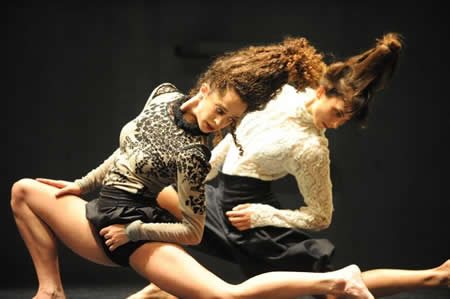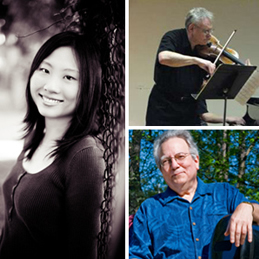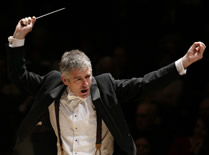It is no small feat for any institution, especially one in the arts, to not only exist, but thrive for eighty-one years, and the American Dance Festival (ADF) has done just that. Since 1934, the ADF has been a beacon of artistic excellence for modern dance, and the opening night event of the 2014 season was a shining example of their continuing showcase of premieres, education, and collaboration.
As in nearly all ADF presentations, one dance company was featured; in this case it was the Vertigo Dance Company, founded in 1992, which has become one of Israel’s most well-known and influential companies. The single work was the United States premiere of Vertigo 20 (2012), choreographer Noa Wertheim‘s distillation of the company’s style and two decades of creations. But first, there was some opening night business and then some presentations.
ADF President Jodee Nimerichter officially opened the 2014 season and then dedicated it to former board of director’s members Roger W. Hooker, Jr., and F.V. “Pete” Allison, Jr. Family members of the honorees said a few words and spoke with great passion about what the ADF and Durham have meant to them. It was also announced that first lady Michelle Obama is the 2014 Honorary Chair of the ADF, and Nimerichter read a letter from her to the nearly filled DPAC (Durham Performing Arts Center) audience.
When the curtain finally rose we saw a unique image that would play an integral part for the entire work: dancers sitting on shelves. The back perimeter of the stage consisted of somewhat drab prison-grey panels that had small shelves, randomly positioned throughout. For those who enjoy delving into symbolism, numerous theories can be presented as to what this “means,” but at its most basic, it was simply a unique, alluring visual effect. There were also a few white balloons suspended from the top of one of the panels: a precursor of the moving finale. The program notes and official press release of the company state that Vertigo 20 is, in part, “… an attempt to redecipher the secret of time.” Quite an ambitious goal but, like any abstract work in any medium, the result is in the eye of the beholder. For me, it is best to leave lofty philosophies behind and simply let the beauty of movement, music, and the emotional effects created wash over you. Once you abandon the “what does it mean” approach, this work takes on a powerful sentiment ranging from remorse and sadness to ecstasy.
There are twelve dancers in this work, and while there are sections that feature two, four, or eight performers, the overall feel is one of equality, ensemble camaraderie, and a conscious effort to not have one person “featured.” Also, while especially the full company sections employ very complex and coordinated movements, Vertigo 20 mostly backs off from showoff displays of acrobatic/athletic prowess that are often central features of many contemporary dances and dancers. But, despite this description, there is far from an all serious, profound effect. There are several very funny moments, my favorite being a kind of psycho-Klezmer section wherein the entire company started off in a circle, almost like in a Jewish wedding, and then wended their way through disco banality to a demented waltz.
Which brings me to Ran Bagno, the composer who wrote the original score for Vertigo 20 as well as other works for the company. This is a masterful score that plays with and knows how to influence our feelings but leaves enough room for the dancers to have at least equal influence on the obvious, but fun, manipulation of the audience.
In keeping with the almost collective ethos of this work, the dancers’ dress was a bit surprising. It is quite drab, formless, unchanging, and at times almost appears to inhibit their movement. This added to the general idea that in order to “redecipher the secret of time” it is what we feel and how we view our human interaction, not showy bells and whistles, that is important.
Many works of art in all genres employ the “remembrance” device of bringing back something from the start of the work at the end. The few balloons at the start which disappeared and we all forgot about returned in a powerful and graceful finale that was enormously moving in its simplicity and grace. Best of all, it was open-ended enough to mean different things to different people. That is the magic of dance, and it was a perfect example of the diversity and excellence that we expect will follow in this eighty-first season of the ADF.
ADF continues with Gregory Maqome/Vuyani Dance June 14-16. For details, click here.













